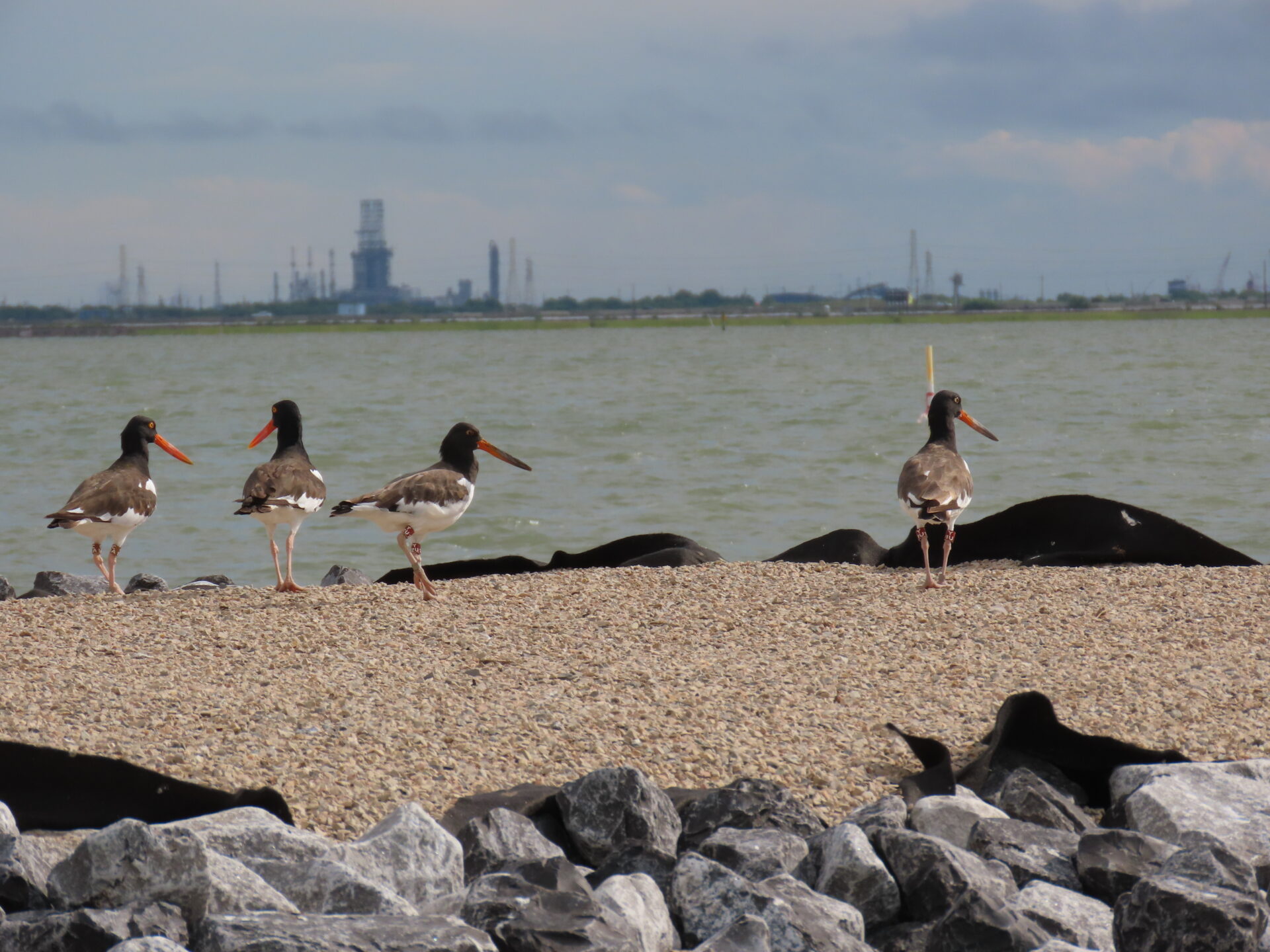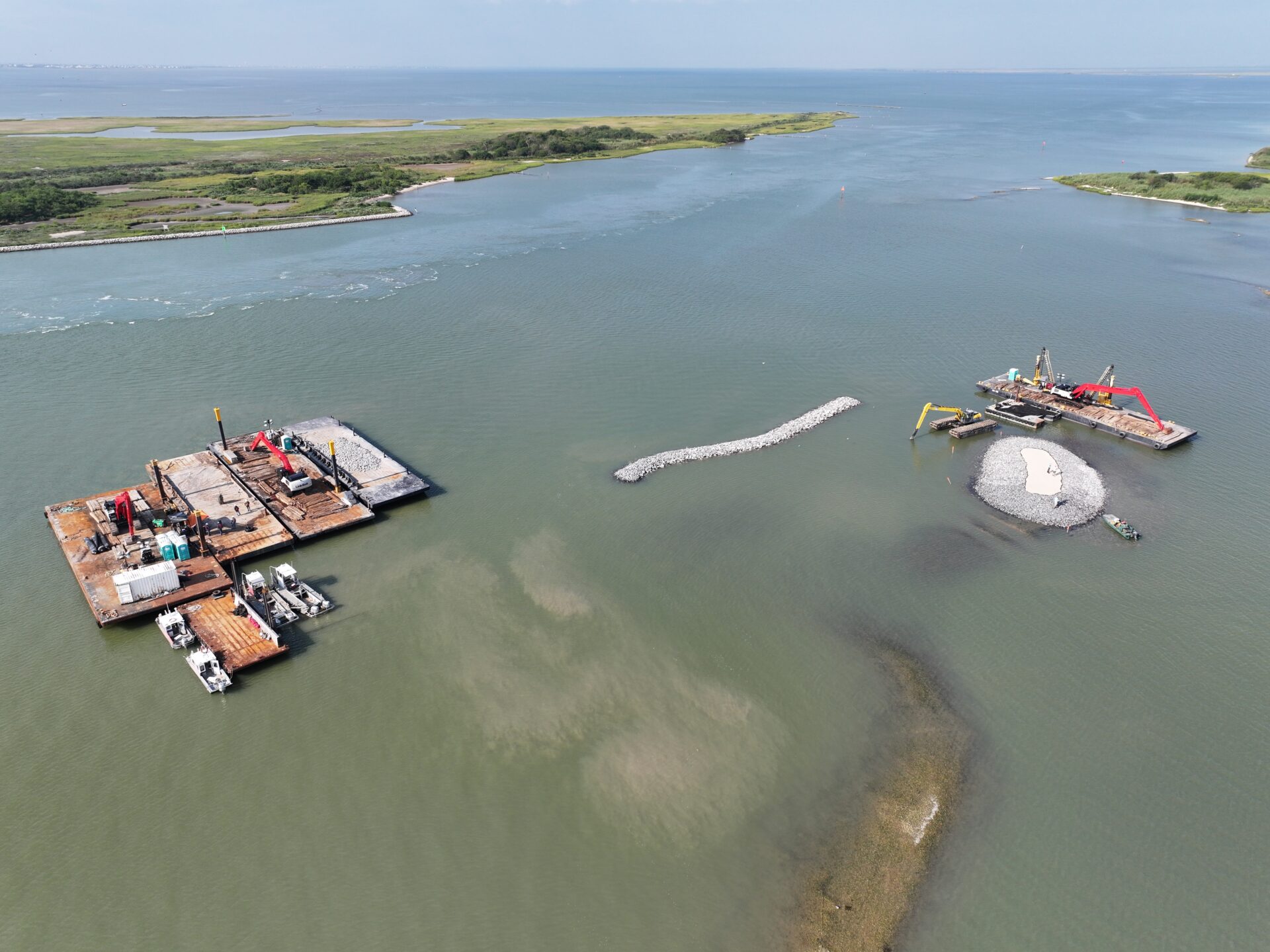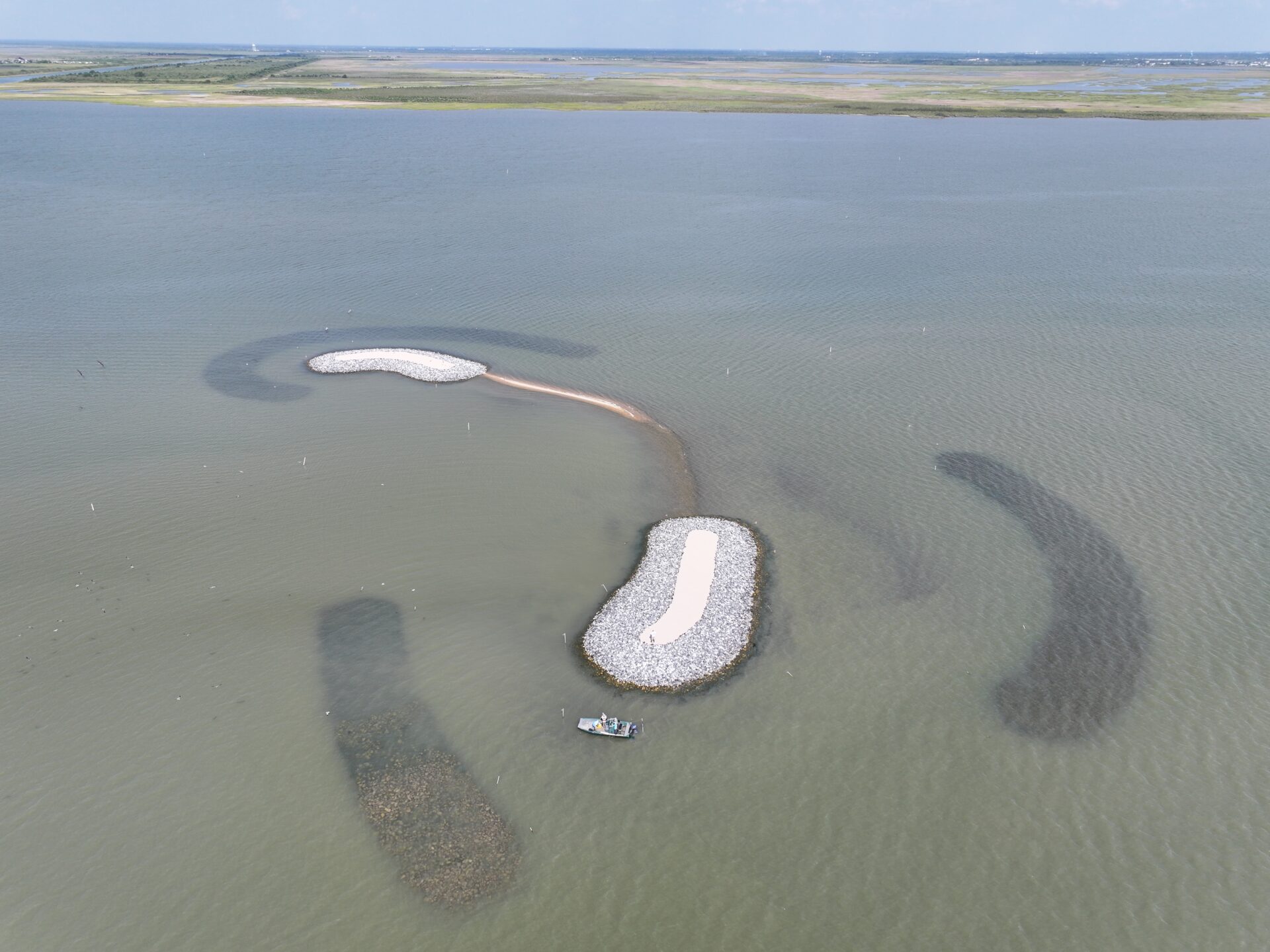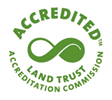Restoring Habitat, Restoring Hope: The Jones Bay Oystercatcher Project
- September 22, 2025
- News
Galveston Bay Foundation is proud to announce the completion of the Jones Bay Oystercatcher Habitat Restoration Project—a milestone effort that brings renewed life to both our bird populations and oyster reefs.
Tucked beside Tiki Island, Jones Bay is home to an array of species that depend on healthy habitat to survive. Over time, however, the Bay has faced increasing pressures: erosion, land subsidence, and rising sea l
evels have all taken their toll. Nesting islands have shrunk, oyster reefs have degraded, and iconic species like the American Oystercatcher have struggled to thrive.
That’s why this project is so important. Over the course of planning and construction, GBF and our partners restored 0.9 acres of bird nesting islands and 1.4 acres of oyster reef. By elevating the islands and reestablishing oyster reefs, the Bay now has stronger, more resilient habitat that will not only support wildlife but also serve as a natural buffer for the surrounding environment.
Why Oystercatchers Matter
Back in 2011, the Gulf Coast Bird Observatory began carefully studying American Oystercatcher activity across Galveston Bay. Their findings painted a concerning picture: nesting pairs were declining, and the very islands they relied on were rapidly disappearing. With
out secure places to nest and feed, the oystercatchers—and the balance of the Bay’s ecosystem—were at risk.
Restoring oyster reefs is a win-win solution. These reefs act as natural dining halls for oystercatchers and their chicks, providing reliable food sources. But they also go far beyond bird benefits: oyster reefs create habitat for fish and invertebrates, filter and improve water quality, and help stabilize the Bay’s shorelines. Healthy oyster reefs are one of nature’s best multi-taskers.
A Project Years in the Making
While construction wrapped up in just eight weeks, the road to this moment was long and deliberate. Restoration projects of this scale require extensive planning—conducting surveys, designing the layout, navigating the permitting process, and securing funding. Thanks to the persistence and collaboration of so many dedicated partners, what once was just an idea is now a thriving reality.
And this project is more than a success story—it’s a model for the future. It’s one of the first of its kind in Texas and will serve as a demonstration for how oystercatcher habitat and oyster reef restoration can work hand in hand to strengthen coastal ecosystems.
Looking Ahead
The work doesn’t end here. GBF will continue monitoring the site over the next five years to measure its productivity and ensure it fulfills its promise for wildlife and water quality alike. Each year will bring new lessons, new observations, and hopefully, new nesting pairs of American Oystercatchers calling Jones Bay home.
Powered by Partnership
Projects like this don’t happen alone. The Jones Bay Oystercatcher Habitat Restoration was made possible by the dedication and support of our many partners: the U.S. Fish and Wildlife Service Coastal Program, Texas General Land Office, Texas Parks and Wildlife Department, TCEQ Galveston Bay Estuary Program, Ducks Unlimited, Gulf Coast Bird Observatory, Phillips 66, and the Black Fly Affair.
At Galveston Bay Foundation, we’re passionate about building a resilient Bay for generations to come. The Jones Bay project is just one example of what’s possible when science, community, and commitment come together. We can’t wait to see what the future holds as these islands and reefs flourish.







